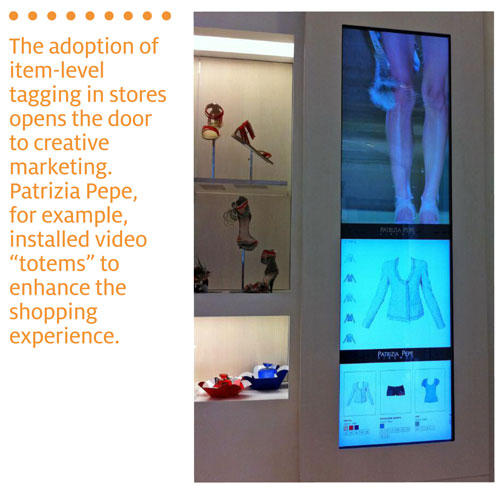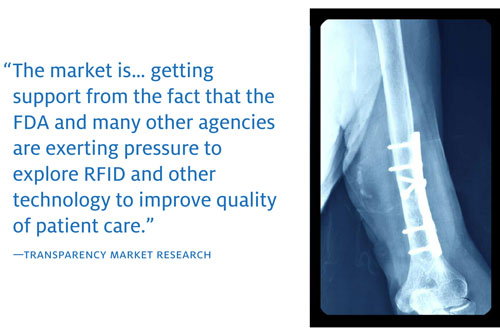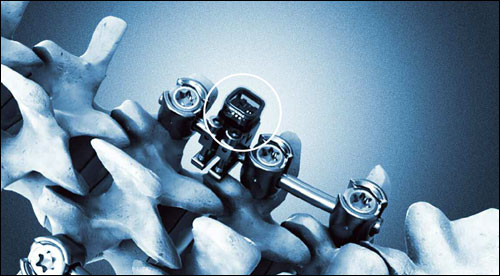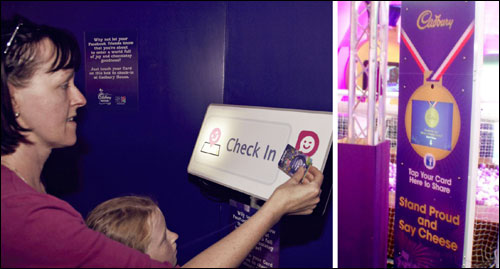Apr 25, 2014Millions of people young and old are walking around with a variety of implanted medical devices—from artificial hips and knees to heart valves and pacemakers, spinal screws and rods, breast implants and ear tubes—that are improving their health and well-being. That is, as long as the devices are safe and effective.
In September, the U.S. Food and Drug Administration (FDA) took steps to improve patient safety. The FDA issued a final rule on the Unique Device Identification System, which requires that most medical devices distributed in the United States carry a unique device identifier (UDI). The system is designed to facilitate quick and efficient identification of recalled devices, improve accuracy and specificity of reports about adverse events, and provide a foundation for a global, secure distribution chain to thwart counterfeiting and diversion.
The label and package of each medical device must include a UDI in a plain-text version and in a form that uses automatic identification and data capture (AIDC) technology, such as bar codes or RFID, to convey lot or batch number, expiration date and other production-specific information. The rule is "technology neutral" on the particular form of AIDC technology to be used, leaving that to the device labeler's discretion.
In addition to implantable and single-use medical devices, the ruling applies to devices that may be used multiple times, such as surgical instruments and some life-supporting and life-sustaining devices. According to the FDA, a UDI will be required on the device itself if the device is intended to be used more than once and to be reprocessed before each use. In all cases, device manufacturers must submit data to the FDA-administered Global Unique Device Identification Database (GUDID), which will serve as a reference catalog.
"The UDI system will provide all stakeholders—health-care professionals, patients, industry, researchers, health-care community and other government agencies—with a consistent and standardized way to identify devices throughout their distribution and use," says Jennifer Rodriguez, press officer in the FDA's Office of Media Affairs. "The data in the GUDID will be foundational to realizing benefit from the UDI system. As UDIs become part of electronic health records, clinical information systems, claims data and registries, the FDA and other stakeholders can use the device identification information in the GUDID to make reliable, meaningful links across these data sources and the clinical information contained in them, within the constraints of patient privacy protection."
Medical device manufacturers that adopt RFID to meet UDI requirements should expect the effort to involve a large capital expenditure, including buying tags and building the infrastructure, says Faisal Ghaus, VP of TechNavio, a global technology research firm. But, he adds, there will be a return on that investment. From an operational standpoint, Ghaus says, the implementation of the UDI ruling will help eradicate counterfeit products that account for revenue losses for major companies. It also will allow companies to employ better inventory management across the product's value chain, since expiration dates, manufacturing dates, batches and so on will be identified almost instantaneously.
"In cases of a product failure in large numbers, there would be no need for a total recall of all products," Ghaus says. "The batch from which the defective products came, and effectively the location from where these products came, can be identified and isolated, thereby minimizing the costs involved as against a total recall."
RFID vs. Bar Codes
The FDA ruling mandates different timelines, depending on the device class, including: September 2014, for labels and packages of Class lll medical devices (replacement heart valves and silicone gel-filled breast implants, for example); September 2015, for implantable, life-supporting and life-sustaining devices; September 2016, for the labels and packages of Class II medical devices (which range from infusion pumps to surgical needles, suture materials and X-ray machines) and permanent UDI markings for Class III devices intended to be used more than once and reprocessed before each use; and September 2018, for permanent UDI markings on Class ll devices, as well as labels and packages of Class I devices (including handheld surgical instruments).
The FDA did not mandate that all permanently implantable medical devices need a UDI mark on them directly, as was originally proposed, says Scott Silverman, chairman and CEO at VeriTeQ. "That would have been premature, because the only applicable technology to meet that standard was RFID," he says. But, he believes, VeriTeQ's Q Inside Safety Technology for UDI—which includes an FDA-cleared, passive low-frequency RFID microchip, proprietary handheld reader and database for storing records of the implants—can help some manufacturers of implantable medical devices meet certain requirements of the FDA ruling and achieve other benefits.
The VeriTeQ solution was launched in the European Union and United Kingdom to track permanent breast implants. Issues such as the PIP defective breast implant recall—the implants used unauthorized silicone filler that lead to high rupture rates—will drive the adoption of AIDC regardless of regulatory influence, Silverman says.
Establishment Labs, a manufacturer of medical breast and body-shaping implants, is selling the solution as the Motiva Implant Matrix Ergonomix system. The PIP scandal is "still a front-page story in Europe, so the safety of breast implants and the ability to identify breast implants inside the body is still relevant there," Silverman says. "We believe it will spread around the world as well. Over the next few months, we believe there will be many large customers like surgical centers buying Motiva implants."
VeriTeQ's Q Inside Safety Technology also can be used in pacemakers and other implantable medical devices. VeriTeQ has partnered with Medical Components, for example, to use the technology in MedComp's high-speed vascular ports, which go into patients' bodies to speed up chemotherapy treatments. The RFID chip identifies the port's serial number and type of port, to help ensure correct medication dosage.
In addition, Silverman says, RFID is a good choice for manufacturers of reprocessable or reusable medical devices that have to meet the FDA's requirements for direct device marking by September 2016. "Not to be graphic," he says, "but think of what things look like when they come out of the body, and having to rub your finger along the device to clean it to read the serial number versus just taking a scanner and waving it within six inches of the device."
Compared with 2-D bar codes, "RFID is more resilient—not affected by dirt or liquids, and you don't need line of sight," says Ram I. Alt, product manager of Haldor Advanced Technologies' ORLocate system, which uses passive high-frequency RFID to track, manage and analyze surgical instruments and sponges individually before, during and after surgical procedures. "And with the Haldor RFID-enabled surgical item management solution, you can scan multiple instruments at once."

Haldor currently works with hospitals directly and through partners to retrofit surgical instruments with its technology. But Alt says there is a high degree of interest from surgical instrument manufacturers to leverage RFID, "since they need a clear path to be compliant with the ruling."
"RFID is a great enabling technology to provide instrument-level differentiation," says Sabina Chadha, executive VP of sales and marketing at Haldor. The technology provides the license plate that a particular instrument was used on a particular patient for a particular case, with applications that include keeping defective instruments from being used or isolating those that are exposed to patients with infectious diseases. This includes wanding the patient to ensure that no sponge or instrument is left behind in the patient's body cavity.
Retained Surgical Items (RSI) events can lead to infections and potentially death, and leave a hospital liable to lawsuits.
Alt adds that ORLocate can be integrated with active real-time location system (RTLS) solutions used in hospitals to track and manage assets, personnel and patients. If, for example, surgical instruments with passive tags are sitting on carts identified with active RFID tags, you can have complete visibility of mobile assets and high-dollar value items, he says. That, he adds, improves workflow efficiencies, "since if you don't know where your instruments are you can't start a procedure on time."
HID Global also works with hospitals that want to affix one of its standard RFID tags onto their surgical instruments, but its main business in this market is custom-designing tags for particular manufacturers' surgical tools. Marc Bielmann, VP and managing director at HID, believes the greatest success related to using RFID for surgical tools' identification and tracking comes from "working with the tool manufacturer directly and trying to embed as much as possible in the RFID tag in the tool."
HID has several large projects under way with manufacturing customers, which it is not allowed to name, to use its high-frequency or low-frequency passive RFID technology on surgical instruments, such as drills that would be inserted into patients' veins to remove plaque, says Richard Aufreiter, director of product marketing. "The machine that you plug into the tool has a small RFID reader built in to detect what the tool is, if it has been used before, if it was disinfected," he says. "So it makes sure you operate [the tool] according to specifications."

Bar codes are an "easier and cheaper" way for surgical instrument manufacturers to comply with the FDA rule, says Evelyn Ong, business development director for aerospace and health care at Xerafy, which makes RFID tags including ultrahigh-frequency tags for medical instrument tracking. But, she says, Xerafy is working with some instrument manufacturers that are considering how they can make a stronger business case to hospital customers to select tools that embed RFID technology into the design from the start.
"The key benefit is in the OR," Ong says. Hospitals can use bar codes to track an instrument's journey from sterilization to the operating room and back, but "the key is when they have to do inventory counts of instruments in the OR. If you start with 100 instruments, you have to end with 100, no more and no less." And unlike RFID, bar codes and the one-by-one scanning they support don't offer much of an improvement on the manual process most hospitals currently use. "The speed and increased productivity and accuracy RFID brings is unbeatable," she says. "It changes completely how inventory is taken."
Beyond the Mandate
As medical device manufacturers plan their approach to compliance with the FDA rule, they are also thinking ahead and considering how RFID could improve their internal operations and boost customer satisfaction. Some companies that have deployed RFID are already achieving such benefits.
Medical device and equipment manufacturer Stryker, for example, is using RFID to ensure the totes it ships to hospitals for use in orthopedic surgical procedures—filled with 40 to 100 sterile orthopedic implantable products—are complete. The RFID system also checks the totes when they are returned to Stryker facilities. "When it comes back, we've got to find out what's missing, because we cannot afford to make the mistake and send it back out [to medical facilities for another procedure] and there's something missing," Paul Pennington, supply-chain optimization manager at Stryker, said at RFID Journal's LIVE! 2013 conference. "We needed something to speed up the process [as] field surgical procedures continue to increase."
The choice, Pennington said, was whether to continue doing things the old way or use RFID to make operations smarter and faster, so item counts were more accurate and billing could be accelerated. Today, Stryker's North American orthopedics division is using more than 600,000 UHF passive RFID tags to track orthopedic implantable products at 38 branches and three national loaner centers. Stryker is now expanding that program throughout its European supply chain. (To learn how Stryker planned and implemented its RFID deployment, see Managing Medical Devices With RFID.)
Wyoming Medical Center, in Casper, Wyo., and New York Hospital, in Queens, N.Y., are both using LogiTag's SmartCabinet to manage their inventory of medical devices and consumables. As products are received at the hospital, employees attach a passive high-frequency RFID tag to each item. The RFID solution automatically creates a digital record of which items are removed, and by whom, from the locked cabinet.

But more benefits could be achieved if the device manufacturer tagged the item package, says Shlomo Matityaho, CEO of LogiTag. It would create a unified platform between the medical device manufacturer and the hospital, based on the real movements of the item, he says. "This will enable the hospital and the vendor to fully move to a consignment model, which we believe is efficient for both sides."
In Israel, for example, the local branch of a medical device instrument company is working with Herzliya Medical Center and other hospitals to improve efficiencies. The manufacturer applies RFID labels to packages of stents and other medical devices. Hospital employees store the tagged items in the SmartCabinet. When an item is needed for a procedure, a hospital staffer swipes his or her RFID-enabled badge to unlock the cabinet and remove the item. The system automatically records what item was removed, and, once that item is used in or on a patient, reports that information, including the procedure performed, to the LogiTag system, to which both vendor and hospital have access.
"This triggers [the distributor] to bill the hospital [for the device] from one end and to replenish the hospital with a new one from the other end," Matityaho says." It also brings precision to the process, he notes. If an item is removed but no record of its use follows, the vendor can immediately take up the situation with the hospital. Additionally, it offers insight into expiration dates so the vendor can replenish regularly supplied items.
The Path to Adoption
The FDA mandate will impact the adoption of RFID. In its recent report, "RFID in Healthcare Industry—Global Market Size, Share, Growth, Analysis and Forecast, 2012-2018," Transparency Market Research puts the global RFID market for health care at an estimated $3.4 billion by 2018. "The market is… getting support from the fact that the FDA and many other agencies are exerting pressure to explore RFID and other technology to improve quality of patient care," it explains.
Other outside pressures could also impact adoption. In light of concerns raised by health issues, such as the PIP recall, there is discussion that insurance may become mandatory for any surgery involving an implant, TechNavio's Ghaus says. "In such a case, insurance companies need to ensure that should a claim be made, the claim is being made for the correct implant," he says. "AIDC becomes extremely important in order to prevent any wrongful claims."
But, in the end, it may be smart business practices that drive medical device manufacturers to adopt RFID. "The long-term benefits from [RFID deployment] will ensure better safety protocols, better inventory management and easier tracking, all of which will lead to cost savings in the long run," Ghaus says.

Most of the medical device manufacturers Xerafy works with have a staff member dedicated to the UDI program, Ong says. While bar codes will satisfy regulatory requirements, a handful of companies are looking past that, despite the challenges of source-tagging. "They are more forward-thinking," she says. "They do see the benefits of RFID, and they are committed to work with us on RFID."
RFID—A New Tool for Surgeons
Medical-device manufacturers are developing intelligent implants that use radio frequency identification technology to provide real-time information during surgeries and post-operatively, to improve patient outcome and recovery.
One smart device, OrthoSensor's VeraSense Knee System, is being offered by knee replacement vendors Biomet, Stryker and Zimmer. The system features a single-use sensor that is inserted into the knee during a total knee replacement procedure. It uses an RF technology (Medical Device Radiocommunications Service) for real-time streaming communications, giving surgeons a graphical display to help them fit the implant properly, as well as provide identification data such as the product's serial number.
But the future, says Thomas Packert, OrthoSensor's VP of IT, is to have a smart knee that uses RFID to communicate to a device outside the knee post-operatively. The company is working on the VeraSense Implantable Sensor Technology, which will embed microelectronics in permanent knee implants to wirelessly send patient information to doctors so they can monitor balance and alignment.
A similar vision is in place at Intellirod Spine, which is developing a wireless implantable microelectronic lumbar spine fusion sensor that would be clamped onto a rod-based pedicle screw system during surgery, to deliver data about bone growth to spine surgeons. The goal is to provide doctors with an objective read on a surgery's success and information to help them prescribe additional treatments, such as bone growth stimulation, says CEO Ric Navarro. It could also help patients avoid post-operative CT scans and more exploratory surgery, he adds.
During post-surgery office visits, a doctor would use a custom RFID reader to retrieve a measurement of rod strain from the high-frequency RFID chip incorporated in the system; declining rod strain indicates the fusion is progressing well. The chip also communicates the sensor's serial number for product identification.

While the sensor is easily removable, "the beauty of passive RFID is that it eliminates the need for a battery power source so it is quite safe to leave in the body," Navarro says. "We were initially concerned about the depth of penetration of power and signal through human tissue, but we think we can get that 3- to 4-inch penetration into the body to get the signal out even with a very tiny reader coil [to power the device and send out the signal]," he says. The reader coil has to be tiny to avoid interfering with muscle tissue or being felt by the patient.
The company plans to begin human clinical trials next year, to secure U.S. Food and Drug Administration approval. If all proceeds apace, it could be available in the United States by 2017, and perhaps a year earlier in Europe. "The point is proving the safety for the permanent implant," Navarro says.
Of course, safety has to be matched with effectiveness. The jury is still out on CardioMEMS' Champion HF Pressure Measurement System, designed to improve the management of severe chronic cardiovascular diseases by implanting miniature wireless sensors that would use RF to transmit cardiac output, blood pressure and heart rate data. In October, an FDA advisory panel narrowly voted in favor of the device, deeming it safe but ineffective.
Still, the door is wide open for RFID-enabled innovation in the medical-device sector, because of the technology's ability to transmit through flesh and tags to be sized to fit the application. "Health-care applications that require a daily or an hour-by-hour monitoring can employ the technology, which can be used to measure, for example, any shift in an implant, or bone being dislodged through minute factions," says Faisal Ghaus, VP of TechNavio, a global technology research firm.


